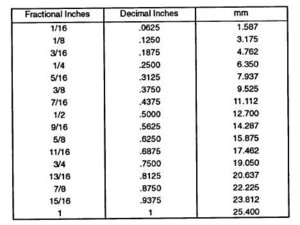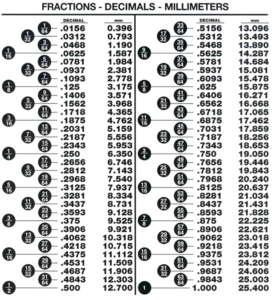In the model ship building world what tolerance is considered "Good Enough". I am building my first ship and started some of the superstructure parts and find myself wanting to stay within ± .01(mm) for a final sanded piece. Just curious if I am being to "anal" for what it is worth.
-

Win a Free Custom Engraved Brass Coin!!!
As a way to introduce our brass coins to the community, we will raffle off a free coin during the month of August. Follow link ABOVE for instructions for entering.
You are using an out of date browser. It may not display this or other websites correctly.
You should upgrade or use an alternative browser.
You should upgrade or use an alternative browser.
- Joined
- Oct 23, 2018
- Messages
- 857
- Points
- 403

Are you talking about 1/100mm ?
If I reach 2/10mm I am happy.

If I reach 2/10mm I am happy.
Thank You.....This is the sort of info I was asking for.Are you talking about 1/100mm ?
If I reach 2/10mm I am happy.
Depends upon a lot of factors... scale, materials, method of construction, what part of the ship, how visible it will be, is it structural or decorative? Really it all boils down to how it looks to your own eye and what your own expectations are. The main thing is to not thing too long about it... build it and see how it looks. Hope this helps.
- Joined
- Dec 1, 2016
- Messages
- 6,299
- Points
- 728

the tooling itself has a + or- of .020 so starting at that point adding on more material to allow for fit and finish + another .035 and now for the tolerance for the "hand of man" +.010 and finally the overall tolerance of the construction of the model +.030 your close to building an final model to the tolerance of 1mm
i say that is pretty darn good work.

i say that is pretty darn good work.

In the model ship building world what tolerance is considered "Good Enough". I am building my first ship and started some of the superstructure parts and find myself wanting to stay within ± .01(mm) for a final sanded piece. Just curious if I am being to "anal" for what it is worth.
I'm building the 1847 Harvey 1:50 it has a two layer plank system. ...........
would like to see your model - with your own request for tolerance - would be great
I think working to 0.01mm tolerance is waaaay to high a bar to set yourself.On all but the smallest of items 0.2mm is imperceptible to the human eye.
A plank on frame model will expand and contract way more then 0.01mm due to changes in humidity.
Kind Regards
Nigel
A plank on frame model will expand and contract way more then 0.01mm due to changes in humidity.
Kind Regards
Nigel
What tolerance do you allow yourself?I think working to 0.01mm tolerance is waaaay to high a bar to set yourself.On all but the smallest of items 0.2mm is imperceptible to the human eye.
A plank on frame model will expand and contract way more then 0.01mm due to changes in humidity.
Kind Regards
Nigel
- Joined
- Dec 1, 2016
- Messages
- 6,299
- Points
- 728

when I mill out the material for the bomb vessel if the measurement calls for 1/4 inch .250 6.350mm I will over cut so .250 is more like .265
when measuring on the model if say the deck beams are 1/2 inch .500 12.700mm center to center I will hit the mark within .020
in model building i am working within .046 to .078 if i am aiming at .063

when measuring on the model if say the deck beams are 1/2 inch .500 12.700mm center to center I will hit the mark within .020
in model building i am working within .046 to .078 if i am aiming at .063

Last edited:
What tolerance do you allow yourself?
As a rough guide,small items small scale 0.1mm bigger assemblies bigger scale 0.5mm.This is reduced if a tight fitting joint is required.This reflects full size practice.I have worked to ISO standards for many years in my day job.Standard tolerance is 2mm but when you get to 10 metres and upwards this increases.The tolerance is a percentage of the total linear measurement.
When you say you work to within 0.01mm,is this to a given dimension or one taken from a drawing?The thickness of a line is way beyond 0.01mm.I am less bothered about theoretical measurements to a drawing but more bothered about how the parts come together.This is less about measuring and more about trial fitting and trimming to suit
Kind Regards
Nigel
TALKING ABOUT HUMIDITY AND WOOD, what is going on in this world right now, YESTERDAY HERE IN KANSAS I WENT OUT to do my shopping tempertures in the low 30s came home at 2:30 it was upper 60s, at 4:00PM pushing 70s been like this for days heat and A/C, think what is happening to wood OH BOY. Don
The tolerance is a percentage of the total linear measurement.
Yes, absolutely, I could not have said it any better. Another thing Dcox is that errors do build up - you might start out with a piece that is .01 or .03, but when that is glued to another piece, then those pieces have some tolerance errors too. If you want that kind of accuracy, then (not being sarcastic - but being real here), you will need to keep your calipers very clean with alcohol or acetone to keep the mating surfaces of the calipers clean each time you measured a part.
Let me say it this way. In the "machinist world" there is no such thing as perfect. Everything has a tolerance to it. It also depends on what you are wanting to achieve. If we had an example of a process you are trying to do, then I can be of better guidance. You said something about a superstructure, usually when modelers refer to a superS, they are talking war ships or other 'structures' within a very large ship that has many decks or layers to it. For instance the Bismark has superS as well as the Titanic.
I personally think perhaps you should lower the bar of expectancy for yourself just a little bit and enjoy your project - I admit that this is hard for me to do as well as I like for things to be 'just right'. Plastic medium is much easier to achieve than wood by far. Metal is even more precise to work with as I can remove .01mm of material off some stock if I have to. That is 1/100 of a mm. I think that is less than a human hair (maybe)?
So, I am not going to say one way or another 'if you are anal or not' - that is not for me to be critical, but I will say that overall, I think that is too much to ask of yourself and the main thing is to stay within 'reason'.
Yes, absolutely, I could not have said it any better. Another thing Dcox is that errors do build up - you might start out with a piece that is .01 or .03, but when that is glued to another piece, then those pieces have some tolerance errors too. If you want that kind of accuracy, then (not being sarcastic - but being real here), you will need to keep your calipers very clean with alcohol or acetone to keep the mating surfaces of the calipers clean each time you measured a part.
Let me say it this way. In the "machinist world" there is no such thing as perfect. Everything has a tolerance to it. It also depends on what you are wanting to achieve. If we had an example of a process you are trying to do, then I can be of better guidance. You said something about a superstructure, usually when modelers refer to a superS, they are talking war ships or other 'structures' within a very large ship that has many decks or layers to it. For instance the Bismark has superS as well as the Titanic.
I personally think perhaps you should lower the bar of expectancy for yourself just a little bit and enjoy your project - I admit that this is hard for me to do as well as I like for things to be 'just right'. Plastic medium is much easier to achieve than wood by far. Metal is even more precise to work with as I can remove .01mm of material off some stock if I have to. That is 1/100 of a mm. I think that is less than a human hair (maybe)?
So, I am not going to say one way or another 'if you are anal or not' - that is not for me to be critical, but I will say that overall, I think that is too much to ask of yourself and the main thing is to stay within 'reason'.
A really interesting question and also interesting comments. I look at the issue more qualitatively than quantitatively. If something doesn't come out 100% right, I work though three questions:
1. Will anyone other than me notice?
2. If yes, can I fix it?
3. If yes, will fixing it make it better or worse?
If I don't get past 1, after about 10 years I usually stop noticing the glitch!
1. Will anyone other than me notice?
2. If yes, can I fix it?
3. If yes, will fixing it make it better or worse?
If I don't get past 1, after about 10 years I usually stop noticing the glitch!




